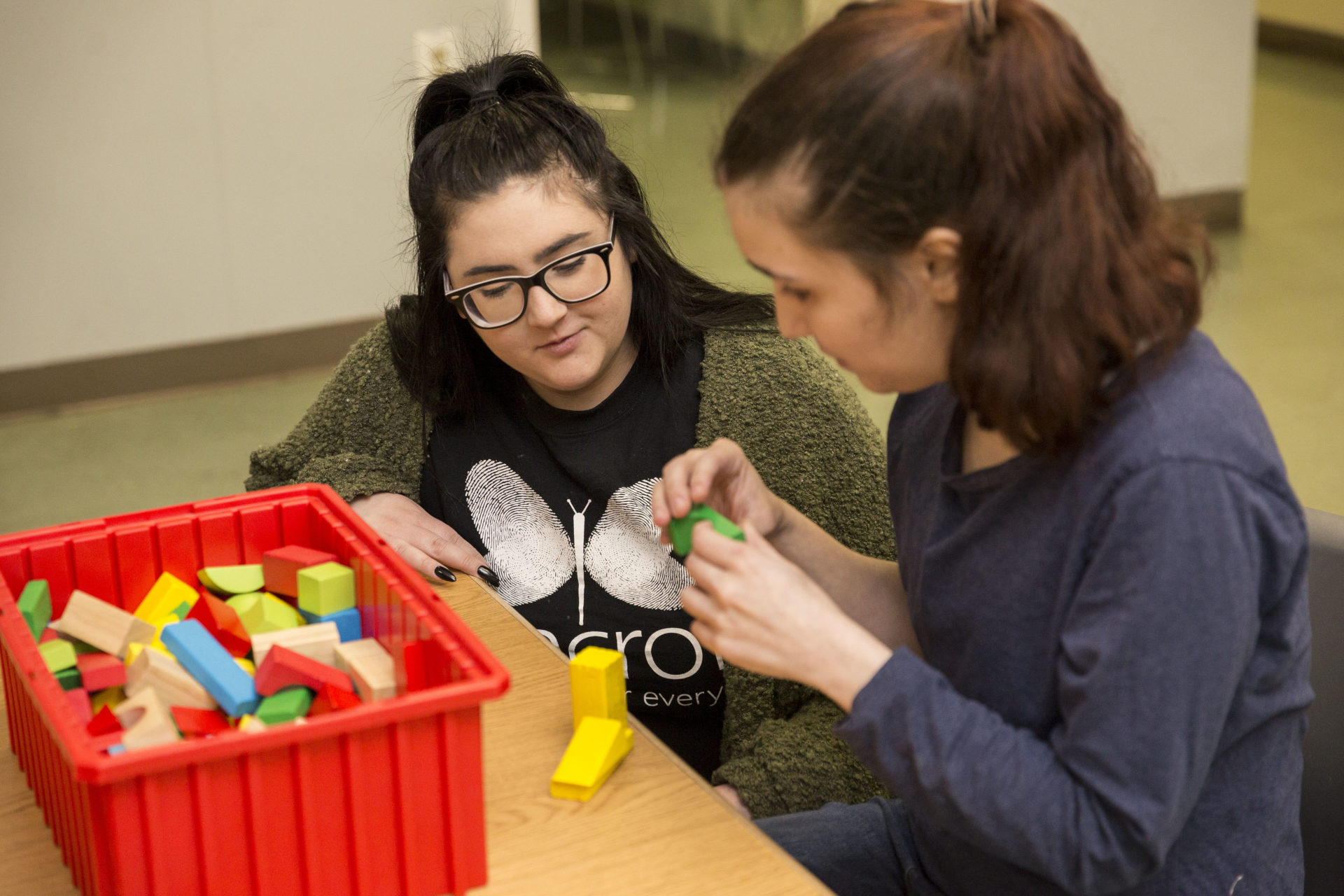By Michelle Gal and Lisa Preisler, Occupational Therapists at Kohler Academy
At Kohler Academy, we understand the importance of emotional awareness and self-regulation for our students with autism and intellectual disabilities. To help them achieve this, we’ve created a unique life-size communication support system called the Zones of Regulation Wall.
Why We Created The Zones of Regulation Wall
As occupational therapists, we are always seeking ways to improve our students’ emotional understanding and coping skills because children with autism often have trouble with emotional regulation. This includes the comprehension of emotions, self-observation and behavioral repressive processes. Often, this confusion leads to a high level of frustration. When a child has a dysregulated nervous system, they may be either seeking out or avoiding sensory stimuli, which can create emotional distress if their sensory needs are not being addressed.
It’s important for us, as occupational therapists, to help each child understand basic human emotions (e.g., sad, happy, scared, mad) so that they can express and recognize the same emotions in others.
We previously used visual charts with pictures of children expressing various emotions that they could hold in their hands or lay on their desks. While helpful, we wanted something more engaging and interactive to ensure this learning activity could be used on a grander scale.
Inspiration struck us during a visit to the Franklin Institute in Philadelphia. Their life-size multi-sensory emotions exhibit sparked an idea: we could create a similar wall at Kohler Academy that features the familiar faces of our students and staff! We knew this personal touch would resonate with them well.
The Benefits of the Zones of Regulation Wall
The Zones of Regulation Wall is an interactive space where students learn about basic emotions and self-regulation.
Here’s how it works for our school:
- Multi-Sensory Learning: Pictures display happy, sad, mad, and scared expressions, each with a corresponding color from the Zones of Regulation program. Students can engage visually and tactilely by pressing light-up switches and auditorily by hearing voice-readouts of the emotions. Sign language cues are also included for additional communication accessibility.
- Self-awareness: A mirror allows students to observe their expressions, fostering a connection between emotions and facial cues.
- Accessibility: The wall is located in a high-traffic area, allowing individual and classroom use.
How the Wall Benefits A Child With Autism or Intellectual Disability
Consistent interaction with the Zones of Regulation Wall helps students develop the ability to:
- Identify their own emotions: By seeing familiar faces expressing different emotions, students begin to recognize these emotions in themselves.
- Develop self-regulation strategies: By understanding their emotions by seeing the examples of others, students can start to learn and practice coping mechanisms for managing them by looking at themselves in the mirror.
The Zones of Regulation Wall is a valuable tool for our students at Kohler Academy. Through its engaging, multi-sensory approach, it helps them navigate the complex world of emotions and develop important self-regulation skills.
If you feel like your child or student with autism or intellectual disabilities is struggling to regulate their emotions, try making a personalized emotional regulation board to help them manage their feelings.
Want to learn more? Visit the Zones of Regulation website: https://zonesofregulation.com/















